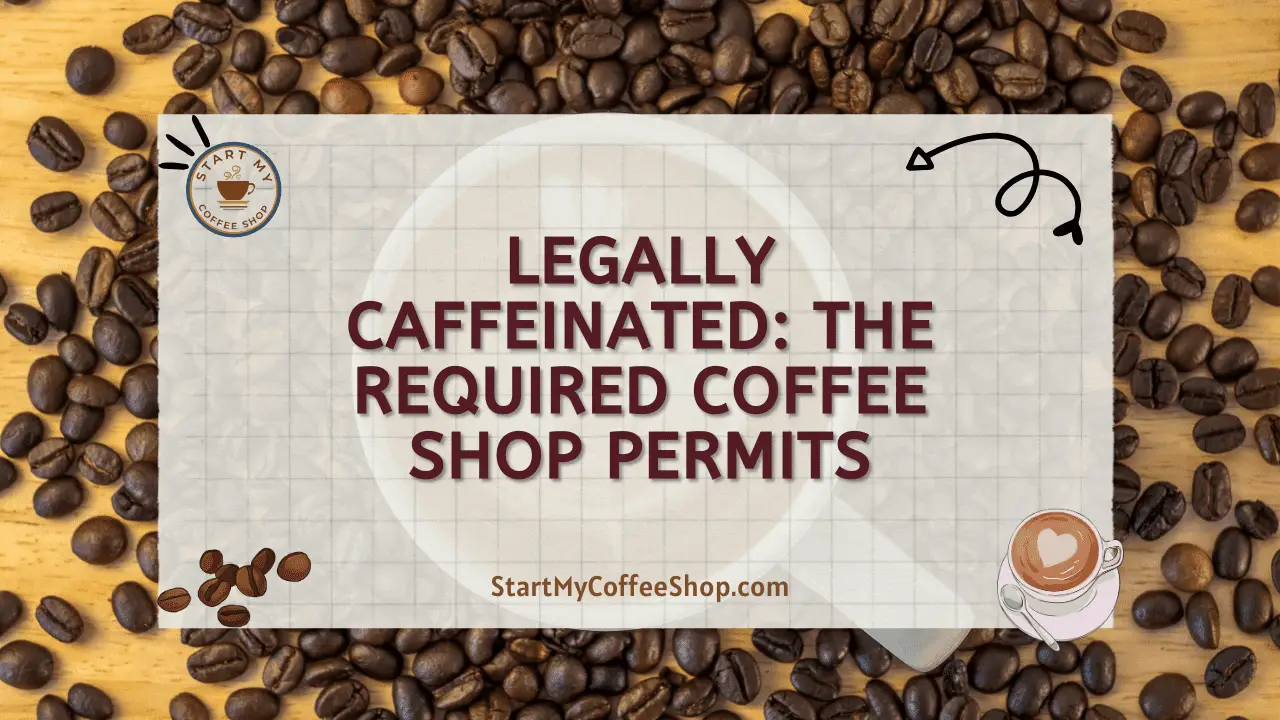Starting a business means you have to make a lot of decisions. Some of those decisions, which are crucial when it comes to the success of your endeavors, are the ones you’ll make about the prices of your coffee. You can’t make money without setting a markup on the coffee you offer. But, how much is too much or too little?
On average, the markup on cups of coffee sold in a coffee shop is around 80%. This means you’ll take the cost it takes for you to make the coffee and add 80% on top of that to set your price per cup. The true cost includes all indirect expenses, not just the coffee itself.
Markup is also known as cost-plus pricing. To be able to do this kind of pricing successfully, you have to know what your true cost is for making specific types of coffee. We’re going to talk about that and more throughout the rest of this article.
Choosing Your Markup
So, we just said the average markup on coffee sold in a coffee shop is around 80%. The markup dollar amount is determined by taking the selling price and subtracting out what it costs you to produce the cup of coffee. The markup percentage can be calculated with an equation:
[(Sales Price – Unit Cost)/Unit Cost] X 100 = Markup Percentage
You can use the formula to set your sales price if you have a markup percentage you want to apply. Or, you can choose your sales price and then use that to determine your markup percentage.
Choosing your markup can be done in a few different ways. Let’s look at how you can do this.
-
- Use the industry average – You’ll take the 80% industry average and stick to it. It’s as simple as that.
- Use the local average – Do a little research in your community to see what the average markup is on coffee in your local market. You’ll be looking at the markup percentage your competitors are using to set their prices.
- Set a competitive price – You can start at a price point and back into the markup percentage that way. If you aren’t able to attract customers because your prices are too high, the markup percentage isn’t going to get you the profits you want anyway.
- Use a target profit margin – You can decide you want to set a goal for a profit margin and do the math to figure out what your markup needs to be to reach your goal. This isn’t the easiest thing to do for a brand new business. You may need to switch to this strategy once you’ve established yourself in the community so you have more information for your calculations.
Need help calculating your labor costs? Check out our article HERE!
What’s Included in the True Cost of a Cup of Coffee?
For all of your calculations to work out correctly and give you accurate information, you need to know what the true cost of making a cup of coffee is. For starters, we know that the true cost of a cup of black coffee is going to be less than that of a specialty coffee, like a hazelnut latte. Why? Because there are more ingredients in the latte. But, the ingredients of the coffee aren’t the only costs you need to consider.
The cost of a cup of coffee includes some other indirect expenses. Even if your barista is standing there, in your shop, not serving a customer anything, there is money being spent that has to be added to the cost of every cup of coffee that gets served. That’s because you have overhead costs. Things like rent, utilities, and security monitoring bills are overhead costs. The total of those should be divided across every cup of coffee served for you to know the true cost of each unit. There’s also the salary and benefits you pay to your employees.
The more direct expenses are the ingredients. You’ll have the price of the beans, syrups, milk, cream, sugar, toppings, and water that go into the different types of coffee you make. Also, there are some semi-direct expenses like cups, lids, stirrers, straws, and more.
Once you have a handle on all of the expenses that need to be added into your calculation for the cost per cup that you’re paying, you can add everything together, divide by the number of cups sold and you’ll have your true cost per cup. If you’re going to be offering several different kinds of coffee, you’ll have to do separate calculations for each type because your cost won’t be the same for all of them.
Different Markups for Different Products
Coffee shops aren’t all the same. Most of us know that. We see some shops that are large, serve food items, and have big comfy couches to relax on. Others are nothing more than a tiny kiosk inside some other type of venue or set up outside on the street. Still, others have much more to offer than just coffee and food. They may have entire retail sections of all sorts of coffee-related merchandise.
That being said, if you have more for sale than simply cups of coffee, the markup percentage you use for the different things you’re selling, shouldn’t be the same across the board. When customers purchase coffee from you that they are going to make at home, they don’t expect to be paying for the labor, your utilities, your rent, and all of that other stuff we mentioned above. The markup you put on coffee they’re taking home to make should equate to a significantly lower sale price per cup than what you are making in the shop. An average would be about a $.25-.50 markup per cup. In-store, you may be making cups of coffee that are marked up $3.00 or more.
You may also sell coffee makers, coffee cups, coffee thermoses, or other retail products. There isn’t a rule that dictates what your markup percentage needs to be on these kinds of items. However, you want to remain competitive, and the average is usually around 50% for retail merchandise.
Adjusting Your Markup
When we take on something new, we often learn a lot as we go further into what we’re doing. You may find that your markup percentages are too high or too low. Should that be the case for you, don’t be afraid to adjust them.
The best way to do this is subtly. You don’t want regular customers getting bombarded with all new pricing across the board. You can work the adjustments in slowly. This will be especially important if you need to bump your prices up. You may want to offer some kind of loyalty incentive that will make your existing customers feel valued so you don’t lose them. Lowering your markup isn’t as tricky, you just don’t want your customers thinking you might be going out of business soon. So, again, try to be subtle about the changes.
Final Thoughts
Most industries have an average markup percentage. For coffee, that average is 80%. Choosing how you set your markup rate comes down to what kinds of coffee you’ll be serving, what other products you will offer, and what your competitors are doing. You need to be smart about your markup rate. If you set it too high, you won’t get customers in the door. If you set it too low, you could be cheating yourself out of profits. Don’t be afraid to make adjustments if you need to. There are no hard-set rules for what your markup percentage should be. Choose it for yourself, just be thoughtful about it.
Frequently Asked Questions
Typically, your profit margin will turn out to be about 15-20% on regular coffee and around 12-18% on specialty coffee drinks.
A profit margin is different than the markup percentage. The profit margin is the percent that’s leftover from the sale once the expenses needed to produce that sale are taken out. A markup percentage is the rate of markup that’s needed to produce the profit margin.
The biggest reason for failure in the coffee shop industry is lack of preparation. That can be said for many other types of businesses, too. You have to know what you’re getting into before you can know how to make it succeed. Doing research helps you set yourself up for success by learning about the industry, about business in general, about regulations and laws for your area, and about mistakes that others have made before you.
They are, done correctly. Think about the location of your shop. That’s super important for attracting customers. Know your competitors. And, learn everything you can about the industry so you can set yourself apart from others and offer customers what they want. The coffee industry is booming and you can be a part of that boom if you enter the market wisely.
To learn more on how to start your own coffee shop checkout my startup documents here
Please note: This blog post is for educational purposes only and does not constitute legal advice. Please consult a legal expert to address your specific needs.

Hi! I’m Shawn Chun
My adventure in coffee began when I first launched my first coffee shop back in the early 2000s. I had to figure out so many things on my own and to make it worse within 2 years of opening two large corporate coffee chains moved in just blocks away from me!
As I saw smaller and even some larger coffee shops in the neighborhood slowly lose customers to these giant coffee chains and slowly close up shop, I knew that I had to start getting creative…or go out of business.
I (like you may be) knew the coffee industry well. I could make the best latte art around and the foam on my caps was the fluffiest you have ever seen. I even had the best state-of-the-art 2 group digital Nuova Simonelli machine money could buy. But I knew that these things alone would not be enough to lure customers away from the name brand established coffee shops.
Eventually, through lots of trial and error as well as perseverance and creativity I did find a way to not only survive but also thrive in the coffee/espresso industry even while those corporate coffee chains stayed put. During those years I learned to adapt and always faced new challenges. It was not always easy, however, in the end, I was the sole survivor independent coffee shop within a 10-mile radius of my location. Just two corporate coffee chains and I were left after that year. All told the corporate coffee chains took down over 15 small independent coffee shops and kiosks and I was the last one standing and thriving.
Along the years I meet others with the same passion for coffee and I quickly learned that it is not only “how good a barista is” that makes a coffee shop successful, but the business side of coffee as well.
Hence why I started this website you are on now. To provide the tools and resources for up and coming coffee shop owners to gain that vital insight and knowledge on how to start a coffee shop successfully.
Stick around, browse through my helpful blog and resources and enjoy your stay! With lots of LATTE LOVE!
Shawn






